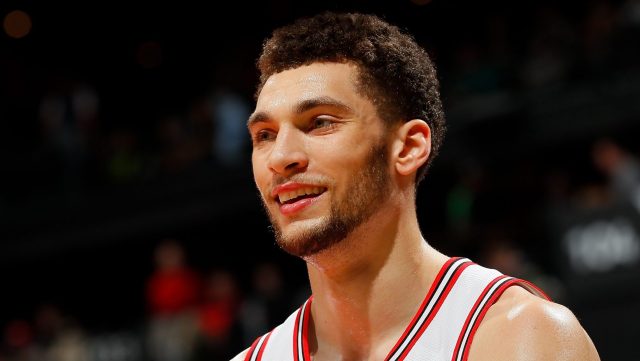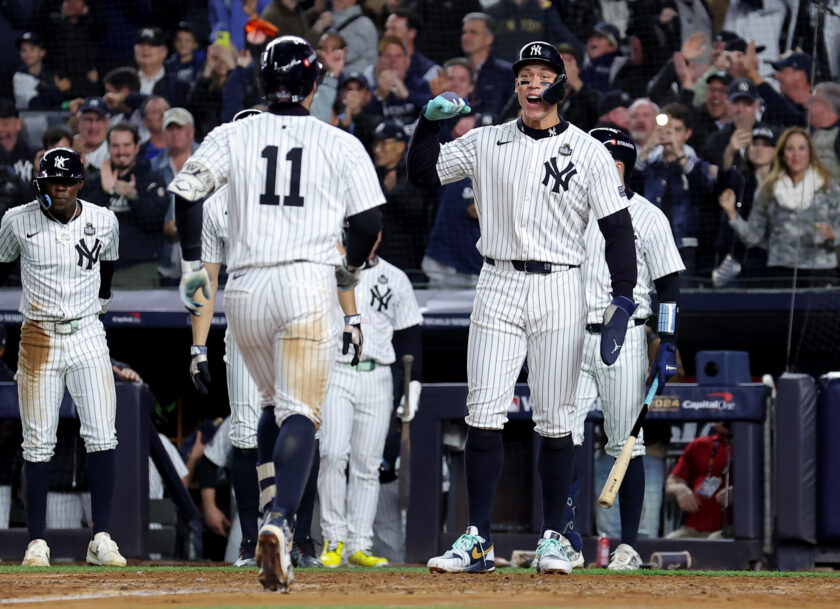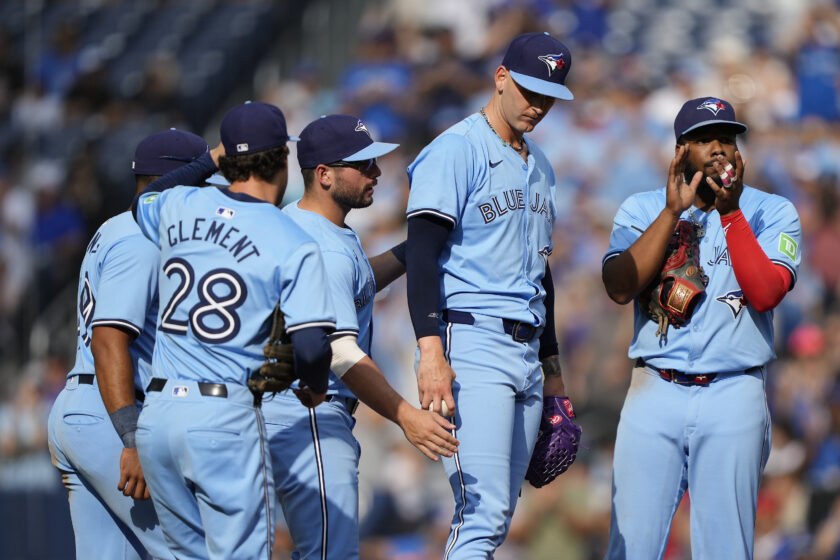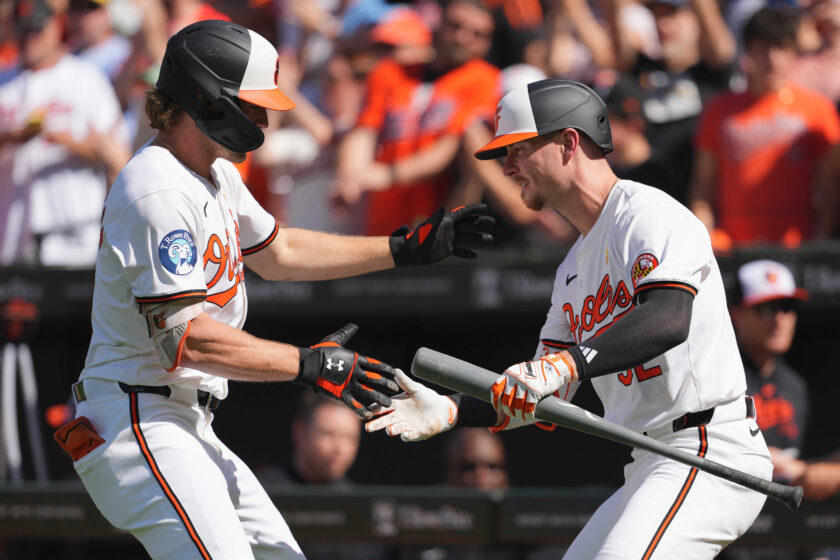Chicago Bulls’ Zach LaVine still has All-Star potential

Pundits may still be torn on exactly how high Zach LaVine’s ceiling is, but the 23-year-old guard still has a chance to develop into an All-Star-caliber player with the Chicago Bulls.
Zach LaVine has turned into an extremely intriguing player, to say the least. His potential as a modern NBA guard is polarizing. On a tanking Chicago Bulls team devoid of offensive talent, he has a magnificent chance to showcase what he can (and can’t) do.
After being drafted seventh overall in the 2014 draft by the Minnesota Timberwolves, he had abilities and setbacks that many coming out of college face. He was always a nuclear athlete, with unreal leaping ability and surprising top speed. However, like many young NBA prospects, he was thin and not threatening on defense.
Let’s take a deep look at his strengths and weaknesses to try and gauge the player Zach LaVine is and the All-Star he might be down the line.
Without question, Zach LaVine’s greatest asset is his scoring ability, not only his points per game or field goal percentage but also how he scores. On paper, LaVine has been below average this year scoring the ball, averaging 17 points per game on 39 percent shooting—35 percent from behind the arc.
However, this season with the Bulls needs to be taken with a grain of salt as he has just come back from an 11-month ACL injury rehabilitation to a Chicago team with very, very limited offensive talent. It must be extremely hard to come from a championship-minded franchise as a part of a deal that saw superstar Jimmy Butler leave for Minnesota. He was the jewel of the deal for Chicago, even though both rookie Lauri Markkanen and lost soul Kris Dunn have exceeded even the highest of expectations.
The 2016-17 season is a better example of what LaVine can provide on offense for a team. Last year was LaVine’s third year in the NBA and it was tantalizing to see what he could do with talent around him.
[sc name=”NBA Center”]As the third option in Minnesota, behind Andrew Wiggins and future all-NBA center Karl Anthony-Towns, he put up 19 points a game on 46 percent shooting, including a scorching 39 percent from deep on seven three-point attempts a game. His three pointers were accurate as both a pull-up shooter and off the catch-and-shoot.
Many scouts were concerned with LaVine’s shooting mechanics in college coming out of UCLA, but he has improved his jumper to a great degree. His three-point shooting progression may very well come to be the most important feature of his game. High-volume, high-accuracy shooters do not come around often, and that was LaVine’s age-21 season. His shooting form and touch are gorgeous. In an NBA climate that exceedingly values three-point shooting at every position, this is monumental for LaVine and makes him a fit on just about any team.
Another irreplaceable feature of LaVine’s game is his unreal athleticism. Since missing the first 42 games of the 2017-18 season, LaVine looked as bouncy as ever. His first step remains in the highest tier with all-NBA players like Russell Westbrook, Kyrie Irving, and Kemba Walker. His vertical and dunking ability are still absolutely filthy.
Last year, LaVine nearly dunked Suns’ Alex Len off of planet Earth, and this year he turned the Kings’ JaKarr Sampson into a practice dummy.
https://www.youtube.com/watch?v=ctzerkM2Gd4
These plays showcase his exceptional bounce when he can get a running start. LaVine loves to attack the basket, almost to a fault at times. He can focus so heavily on getting to the basket as fast as possible that it actually impacts his finishing ability.
He isn’t a great finisher at the rim if he is unable to dunk. His first three seasons in the league saw him finishing at the rim at about a league average rate (63 percent). This year, however, it has plummeted to 54 percent. While it’s understandable that he can’t finish as well coming off an ACL surgery, he needs to prioritize craft at the rim.
A player with LaVine’s size, athleticism, and quickness should be able to finish over or around bigs and guards more easily. He does not possess elite touch near the basket.
Another questionable attribute in his game is the ability to create for those around him.
During his rookie season in Minnesota, LaVine was lightly tested as both a point guard and shooting guard. As a 6-foot-6 athlete with a 6-foot-10 wingspan, he had the frame of a modern elite guard.
However, when LaVine was given the chance to play point in 2014, it became quickly apparent that he wasn’t a special passer. He’d regularly attack the basket or pull up from any range rather than deliver an obvious pass. He did end up averaging three assists per game last season in Minnesota, but the passes were not the kind that elite playmakers make. These were simple passes, like hitting an open role man once in a while or even just rotating the ball.
Given the fact he averaged 37 minutes a game, three assists is not especially impressive. Occasionally, he will make a fantastic pocket pass to a rolling big, but these instances appear to be outliers rather than something to count on. There are flashes of playmaking potential and he’s young enough to learn how to read defenses better and get open teammates good looks.
[sc name=”Nets Link Related” link=”https://elitesportsny.com/2018/03/17/breakdown-of-the-brooklyn-nets-bright-future/” text=”Breaking Down Nets’ Bright Future” ]For LaVine, shot selection and decision making on offense remain a question mark. On a bright note, LaVine has really lowered his turnover ratio. After a rookie season that featured 20 percent of his possessions ending in turnovers, it is great news to see that number is down to 8 percent this year. This ranks with some great ball handlers like Anthony Davis (7 percent), Kemba Walker (8 percent), and DeMar DeRozan (8 percent).
This has turned into a strong attribute to his game, especially given his low assist numbers. While his decision making as a facilitator has been up and down, his shot selection has been less than desirable.
Undoubtedly, the biggest hole in LaVine’s game is his defense. It is absolutely awful. He has trouble guarding just about anybody, regardless of size. His upper body strength is limited and it shows. He is far too skinny to guard small forwards, yet he still can’t guard his own position effectively. He is absent-minded off the ball, allowing backdoor cuts seemingly every game. He doesn’t close out on shooters well and doesn’t deter slashers from the paint.
LaVine is uncomfortable taking contact in any situation that calls for it. On this Bulls team tanking it’s way to the race for Luka Doncic, it might be forgiven. Moving forward, he needs to address his shortcomings on defense, get stronger, and learn how to move his feet to stop players from getting by him.
Zach LaVine’s future is really tough to extrapolate. His game comes down to extremes, both positive and negative. On one hand, he looks like he has the offensive tools to be a high-volume scoring option on a playoff level team due to his fantastic shooting and a practically uncontestable jump shot.
On the other hand, his defense and playmaking look so bad at times that it’s hard to predict a team winning lots of games if he’s in a starting role. But it can’t be understated what a hard worker he is. His ambition and eagerness to prove himself come to light in most of his press conferences.
He has similar styles to players like Denver’s Jamal Murray, All-Star DeMar DeRozan, and even an MVP like Russell Westbrook. While he probably won’t reach MVP-level heights, it seems certain he will play in a few All-Star games during his career, as long as he works on his defense and continues to improve his beautiful jumper.
LaVine’s ceiling remains incredibly high four years into his career, and we may still be four or five years away from witnessing his peak.
[sc name=”Knicks Link Next” link=”https://elitesportsny.com/2018/03/15/new-york-knicks-picking-the-players-entrance-music-part-2/” text=”Picking The Knicks’ Entrance Music (Part 2)” ]





